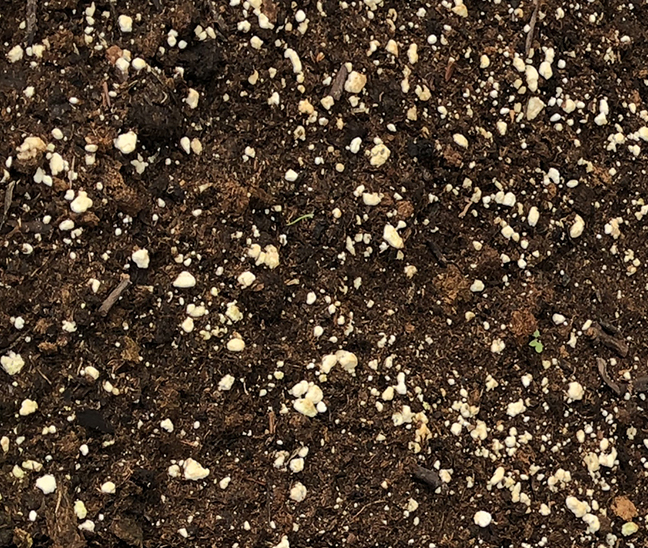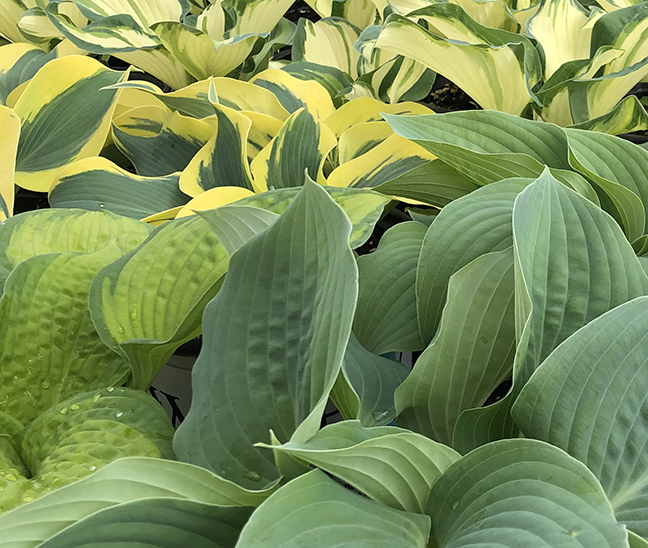Starting seeds indoors
Some vegetables fare better than others when started from seed indoors. Good vegetable seeds to begin indoors are leafy greens like lettuce, spinach, kale, and mustard; and solanums, which are tomatoes, peppers, and eggplants.
Leafy greens can be harvested as baby greens right from a windowsill once the plant has at least 3 to 4 sets of true leaves. If at least one set of true leaves are left, the plant should regenerate more growth. An east windowsill is best for starting leafy greens, and they shouldn’t require additional light if begun after March 19, 2024 - this year's Spring Equinox.
Solanum seeds should be planted indoors to give the plants a head start on the growing season. Plant your peppers, chiles, and eggplants 8 to 10 weeks before your last spring frost forecast date. Tomatoes and tomatillos only need about a 5-week head start. Plant the seeds into separate cells, such as 6-pack trays or peat pots, using a lightweight potting mix or seed starting mix. Solanums will benefit from additional light and heat while they're growing indoors. Keep grow lights 1 to 2 inches above the tops of the plants, and the temperature around 75° to 85° F.
For all your indoor seedlings, the soil should be kept moderately moist but not soggy. Air movement is also important, to prevent fungus from developing. If seeds are started under a dome, remove the dome for at least 8 hours a day to allow the plants and soil to breathe. Plants with inadequate light, heat, and air can become weak and leggy, and they can rot very easily.
All indoor-grown plants will require a bit of hardening off before being transplanted outdoors. This means moving young plants to a well-protected outdoor space, such as a porch with filtered light and overhead roof. Start close to a shady inner wall for 3 to 4 days, slowly moving the plants into more light. In a week and a half or so, the plant should be sturdy enough to go into the ground. For solanums, it's best to wait until after your last frost to start this process.
Terms to know
solanums referred to on this page are edible members of the nightshade family grown from seed. They include tomatoes and tomatillos, peppers and chiles, and eggplants.
true leaves are leaves that appear after the first set of "seed leaves." The first sets of true leaves resemble those of the mature plant, in miniature.
last spring frost is a forecast date specific to your area, intended only as a guideline. It's useful in planning when to plant your seeds, particularly those varieties that can be frost sensitive.
hardening off is a phrase we use for the process of transitioning a plant from its indoor or greenhouse environment to outdoor life. It involves a gradual move from the plants' carefully controlled environment into the conditions of your garden.
Cool-season vegetables
Leafy greens also tolerate frost when direct-sown outdoors, as do peas and root vegetables such as carrots, beets, radishes, and turnips. Sow these seeds outdoors once the average low temperatures are around 25° F. A good practice for faster germination is to keep the prepared bed covered with frost cloth, also referred to as row cover, for the first 3 to 4 weeks after sowing the seeds. Do not let the soil dry out, but also don’t water to the point of sogginess.
Warm-season vegetables
Warm weather crops that should not be started indoors include corn, beans, cucumbers, squash, pumpkins, and melons. These are happiest when direct-sown into soil that is above 65° F. When started indoors, these plants are likely to become leggy, weak, and susceptible to powdery mildew and other funguses. For most varieties available locally, early to mid-June sowing should give the plant plenty of time to be productive. Because Northern New Mexico has such a wide range of microclimates and season lengths, it's a good idea to check your seed packet for the number of days to maturity.
If your season is just too short to grow the varieties you want by direct-sowing outdoors, instead of seeds, you can try starting with young greenhouse-grown plants that have been professionally raised to minimize the risk of those common issues mentioned above. These plants will still need to be hardened off, following the instructions above, and keep in mind that direct-sown plants are likely to be healthier and soon outgrow their transplanted counterparts.




